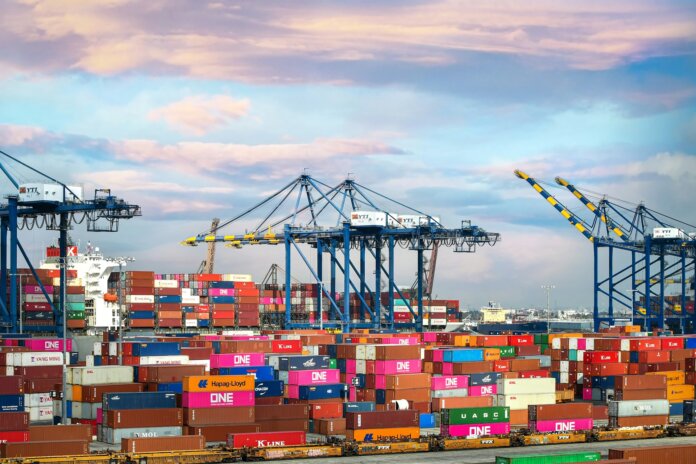
The U.S. Environmental Protection Agency has launched the $3 billion Clean Ports Program to fund zero-emission port equipment and infrastructure to tackle the climate crisis and improve air quality at U.S. ports as part of President Biden’s Investing in America agenda.
The funding opportunities were created under Biden’s Inflation Reduction Act — the largest climate investment in history — and will reduce diesel pollution from U.S. ports in surrounding communities, while creating jobs. EPA Administrator Michael S. Regan and North Carolina Gov. Roy Cooper made this announcement at an event in Wilmington, N.C., as part of the Biden-Harris administration’s Investing in America tour.
“Our nation’s ports are among the busiest in the world, helping us to create good jobs here in America, move goods and grow our economy,” says Regan. “Today’s historic funding announcement reflects President Biden’s vision of growing our economy while ensuring America leads in creating globally competitive solutions of the future. Today we’re making $3 billion available to install cleaner and more efficient technologies while cutting air pollution to protect the people who work at and live near ports.”
“Our country’s ports feed our supply chains to put food on our tables, keep our businesses running and provide for our everyday needs,” adds Cooper. “We are deeply grateful to the Biden administration for the investments that have helped fix our supply chain, rebuild our infrastructure and create thousands of good paying clean energy jobs.”
The Clean Ports Program will help advance Biden’s commitment to environmental justice and the Justice40 Initiative, which sets the goal that 40% of the overall benefits of certain federal investments in climate, clean energy and other areas flow to disadvantaged communities marginalized by underinvestment and overburdened by pollution. EPA strived to ensure that near-port community engagement and equity considerations are at the forefront of the program design, including by evaluating applications on the extent and quality of community engagement efforts.
The program is designed to help ports nationwide transition to fully zero-emissions operations. To achieve this, EPA is releasing two separate Notice of Funding Opportunities (NOFOs) as part of the $3 billion. The nearly $2.8 billion Zero-Emission Technology Deployment Competition will directly fund zero-emission port equipment and infrastructure to reduce mobile source emissions at U.S. ports.
Eligible uses of funding include human-operated-and-maintained zero-emission cargo handling equipment, harbor craft and other vessels, electric charging and hydrogen fueling infrastructure, and a number of other technology investments. Applications under this competition will be evaluated under multiple tiers to ensure that funds are distributed across ports of different sizes and types, and to ensure funding for ports serving tribal communities.
The roughly $150 million Climate and Air Quality Planning Competition will fund climate and air quality planning activities at U.S. ports — including emissions inventories, strategy analysis, community engagement and resiliency measure identification.
Funding for the two grant competitions is available to port authorities; state, regional, local or tribal agencies that have jurisdiction over a port authority or port; air pollution control agencies; and private entities that apply in partnership with an eligible entity above, and that own, operate or use facilities, cargo-handling equipment, transportation equipment or related technology of a port. The funding can be used for projects at water ports (coastal and inland) as well as projects at facilities where goods are transferred between rail cars and trucks (dry ports).
The deadline to apply for the two Clean Ports Program NOFOs is May 28, 2024. Eligible applicants can apply for funding through one or both NOFOs:
Zero-Emission Technology Deployment Competition NOFO
Climate and Air Quality Planning Competition NOFO
To learn more about the Clean Ports Program, applicant eligibility, selection process and informational webinar dates, visit the Clean Ports Program webpage.






